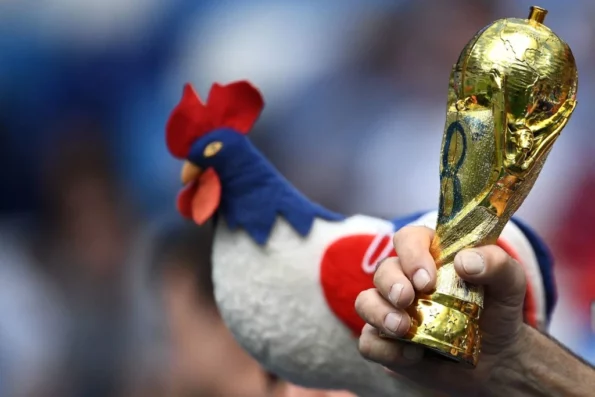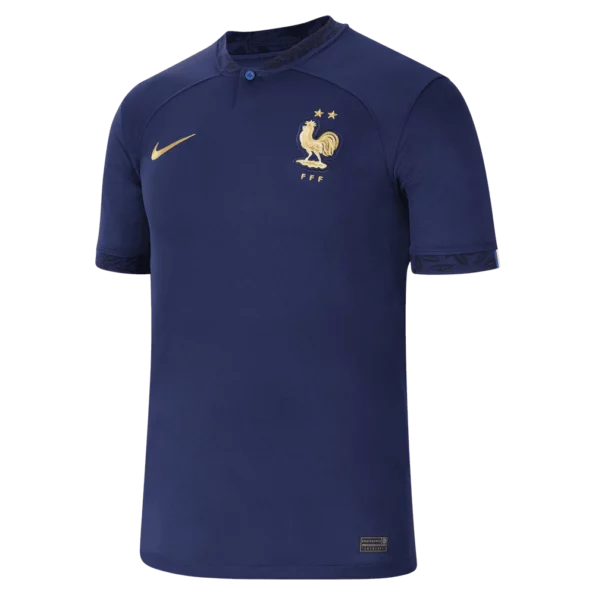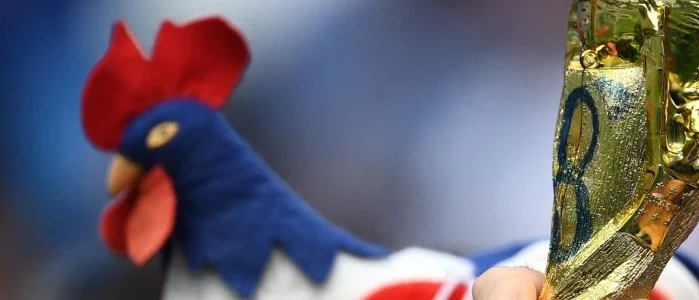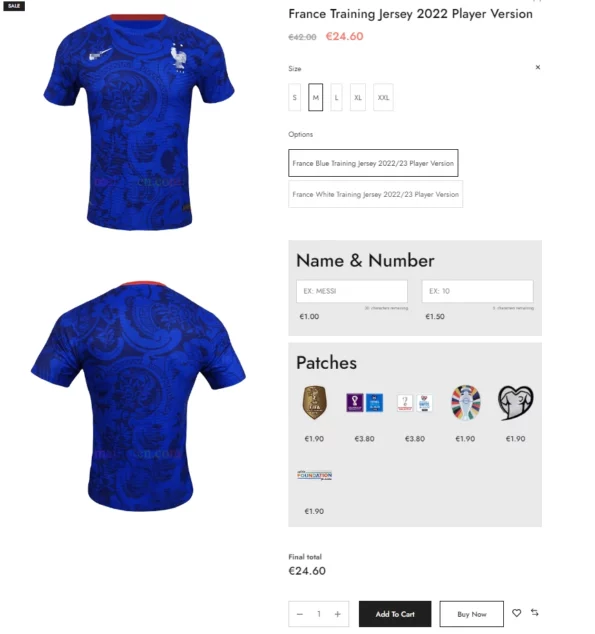From the iconic Eiffel Tower to mouthwatering croissants, France has always been known for its unique and charming symbols. But have you ever wondered why a proud rooster takes center stage on the French jersey? In this captivating blog post, we unravel the intriguing story!
Introduction to the French jersey and the iconic rooster symbol
1. Introduction to the French Jersey
The French national team’s jersey is known for its iconic design and strong symbolism. It consists of a blue shirt, white shorts, and red socks. This combination of colors has been an integral part of the French team’s kit since their first international match in 1908.
Over the years, the design of the jersey has evolved, but its core elements have remained constant – blue, white, and red. The French jersey is not just a uniform; it represents the country’s history, culture, and values. Each element has a specific meaning that makes it unique and instantly recognizable.
In this blog post, we will delve into one of the most prominent symbols on the French jersey – “the rooster” and understand why it holds such significance for the people of France.
2. The Iconic Rooster Symbol

The rooster or “le coq” in French has been associated with France for centuries. It is often seen as a symbol of pride, courage, strength, and resilience. The origins of this association can be traced back to ancient Gauls who used roosters as their emblem during battles.
During World War I, soldiers from rural areas in France had live roosters as their mascots on farms. These roosters were taken along with them to war as a source of comfort and motivation. They were also believed to bring good luck to soldiers fighting on behalf of their country.
In addition to its historical significance in battlefields, the rooster also has deep roots in French culture. It is a popular figure in French folklore and is often associated with the Gallic rooster, which was an important symbol during the French Revolution.
In 1830, King Louis-Philippe introduced the Gallic rooster as a national emblem on the new French coin currency. Since then, it has been used in various official capacities to represent France, including on the French national jersey.
Today, the rooster proudly adorns the chest of every player representing France on the football field. Its presence serves as a reminder of the team’s strength, resilience, and determination to win for their country.
Possible explanations for why the rooster was chosen to represent France on their jersey
Possible explanations for why the rooster was chosen to represent France on their jersey include historical, cultural, and symbolic reasons. The rooster has been a prominent symbol in France for centuries, and its use on the national jersey is deeply rooted in the country’s identity.

One of the main reasons for choosing the rooster as a national symbol dates back to ancient Gaul. According to Roman historian Pliny the Elder, during Julius Caesar’s conquest of Gaul in 52 BC, he encountered fierce resistance from a group called Galli (Celts). These warriors adorned themselves with feathers of roosters before battle as a symbol of bravery and strength. Over time, this image became associated with Gauls and eventually evolved into a national emblem for France.
In addition to its historical significance, the rooster also holds strong cultural ties in France. It is widely considered as one of the most important animals in French rural life, often seen roaming freely on farms and countryside landscapes. Its distinctive crowing sound is also used as an iconic French sound effect in films and media.
The choice of using a rooster on their jersey also reflects certain values that are highly valued by French society. The cockerel is known for its proud posture and fearless attitude – qualities that have come to embody the spirit of France. This representation aligns with many aspects of French culture such as chivalry, courage, vitality, determination and strength.
There are alternative explanations for why a rooster was chosen as a symbol, including its connection to Christianity. According to legend, when St. Peter denied Jesus three times, a rooster crowed, which became a symbol of repentance and faith. In this sense, the rooster may also represent France’s strong Catholic roots.
Overall, the choice of using a rooster as a national symbol on their jersey is deeply ingrained in French culture and history. It represents qualities that are highly valued by the country and showcases their pride and identity on an international stage.
The role of sports and national identity in choosing symbols for jerseys
Sports and national identity have always been closely intertwined, with athletic competitions serving as a way for nations to showcase their pride and unity. In recent years, the role of sports in shaping a country’s national identity has become even more significant, especially in the context of choosing symbols for jerseys.
One prime example of this is the French national team’s use of the rooster as their emblem on their jerseys. The rooster has been a symbol of France since ancient times, representing courage, strength, and vigilance. It first appeared on coins during the Gallic Empire and was later adopted by French kings as an emblem of power and authority.

During the French Revolution in 1789, the rooster became a symbol of resistance against foreign invaders. It was used by soldiers to rally troops during battles and was even depicted on flags carried into war. This association with patriotism and bravery continued throughout history, making it an integral part of French national identity.
Fast forward to modern times; when it came time to choose a symbol for their jerseys, it was only natural for the French national football team to turn to this iconic bird. The decision was made official in 1909 when Fédération Française de Football (FFF) declared that all French teams would wear a cockerel badge on their jerseys.
The choice was met with widespread approval from both players and fans alike. The rooster embodied not just France’s past but also its present strength and determination in sports. As such, it served as a unifying symbol for the team and the nation as a whole.
Conclusion
The iconic rooster on the French jersey has a rich history and symbolizes many things, including national pride, bravery, and strength. Whether you are a fan of rugby or not, it is clear that the rooster on the French jersey holds great significance. Let us remember its meaning and continue to support France with passion and unity.
FAQs
1. Why are roosters associated with France?
Because the Latin word gallus means both “Gallic” and “rooster”, the rooster has been associated with France since ancient times.
2. Why is the Gallic rooster the national animal of France?
In Ancient history, Romans laughed at Gauls due to a linguistic coincidence – the word gallus means both Gaul and rooster! Later, the French kings adopted the bird as a symbol of courage.

